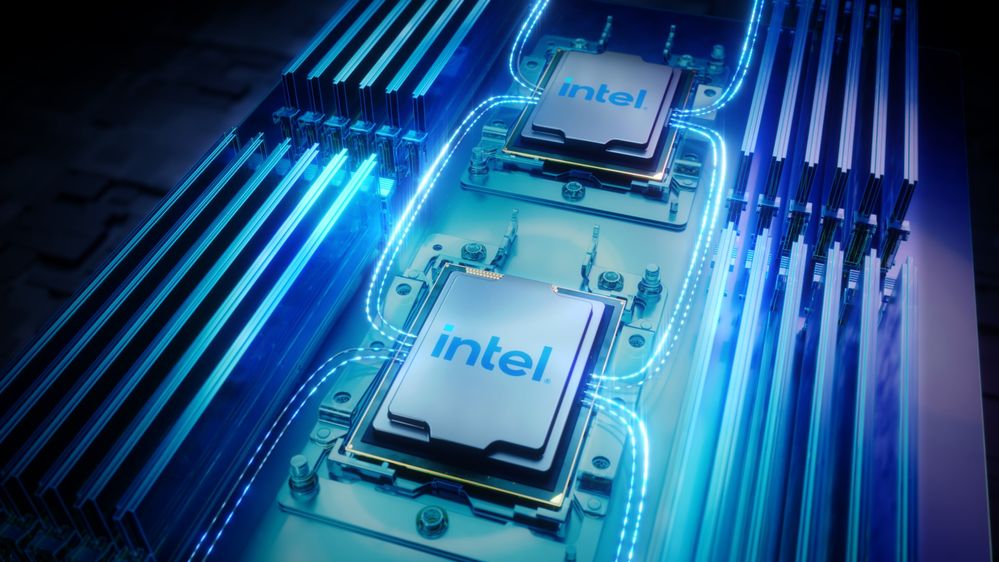 INFRA
INFRA
 INFRA
INFRA
 INFRA
INFRA
Intel Corp. said today it has achieved another key milestone as it strives to make integrated photonics technology for high-speed data transfers a reality.
The chipmaker showed off what it says is the industry’s first-ever “fully integrated optical compute interconnect,” or OCI, chiplet, co-packaged with an Intel-made central processing unit. The new chip was showcased at the Optical Fiber Communication Conference 2024, where it demonstrated what Intel claims is a significant leap forward in high-bandwidth data interconnect performance.
Intel has long been at the forefront of research into silicon photonics, which is said to be the next frontier in terms of expanding the communications bandwidth between computer processors. The technology combines silicon integrated circuits with semiconductor lasers to deliver faster data transfers over longer distances than what traditional electronics are capable of.
Not only does it enable higher-bandwidth data transfers, but also paves the way for software-configurable access to compute and storage resources. It also allows software-defined infrastructure to be decoupled from the hardware and software resources for disaggregated data centers.
Silicon photonics is not a new technology, but Intel and other leaders have struggled to find a way to integrate the photonics aspect with the silicon-based CPUs. Intel’s last major update came in June 2022, when it revealed it had made a major breakthrough in the area of “co-packaged optics.” That was a key step toward creating fully integrated photonics, where the photonic integrated circuit is directly connected to the rest of the compute infrastructure.
Intel believes that the need for silicon photonics is more urgent than ever, as the demands of increasingly powerful artificial intelligence models are putting existing data center infrastructures under immense strain. As AI models get more powerful, they require more and more data, and existing chip interconnects can barely keep up. Silicon photonics is therefore desperately needed to support the growth of AI, according to Intel.
Thomas Liljeberg, senior director of product management and strategy at Intel’s Integrated Photonics Solutions Group, said existing interconnects are rapidly approaching the practical limits of electrical I/O performance. “Our groundbreaking achievement empowers customers to seamlessly integrate co-packaged silicon photonics interconnect solutions into next-generation compute systems,” he promised. “Our OCI chiplet boosts bandwidth, reduces power consumption, and increases reach, enabling ML workload acceleration that promises to revolutionize high-performance AI infrastructure.”
Intel explained that though existing electrical I/O technologies, which are the basis of most chip interconnects today, can support high-bandwidth densities, they can only do so over very short distances of one meter or less. It’s possible to expand this distance using pluggable optical transceiver modules, but these result in excessive costs and energy levels that aren’t sustainable for AI workloads.
That’s why Intel’s first OCI chiplet is such a promising development. According to the company, it can support a maximum of 64 channels of 32 gigabytes-per-second data transmission in each direction on up to 100 meters of fiber optic cables. That’s more than fast enough for data center operators to scale up clusters made up of CPUs and graphics processing units, Intel promised.
Intel offered an analogy to help illustrate the difference between today’s electrical I/O interconnects and its new OCI chip. It compares the CPU/GPU clusters used to power today’s AI applications as “houses standing on the same block.” The people living in those homes can easily walk from door-to-door to communicate with their neighbors, but such communication is not possible outside that block of houses.
“Optical I/O solutions like Intel’s OCI chiplet give those neighbors a motorcycle, allowing them to carry more goods at a time for a much longer distance to other houses in the neighborhood beyond their block without spending so much energy,” Intel explained. “This level of improved performance is what emerging AI scaling will require.”
The OCI chiplet is still a prototype, but Intel says it’s now working with select customers to co-package it within their existing systems-on-chip as an optical I/O solution.
Support our mission to keep content open and free by engaging with theCUBE community. Join theCUBE’s Alumni Trust Network, where technology leaders connect, share intelligence and create opportunities.
Founded by tech visionaries John Furrier and Dave Vellante, SiliconANGLE Media has built a dynamic ecosystem of industry-leading digital media brands that reach 15+ million elite tech professionals. Our new proprietary theCUBE AI Video Cloud is breaking ground in audience interaction, leveraging theCUBEai.com neural network to help technology companies make data-driven decisions and stay at the forefront of industry conversations.